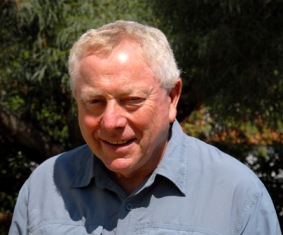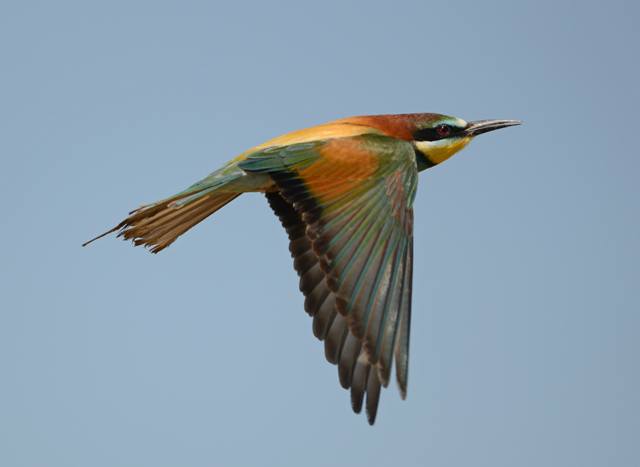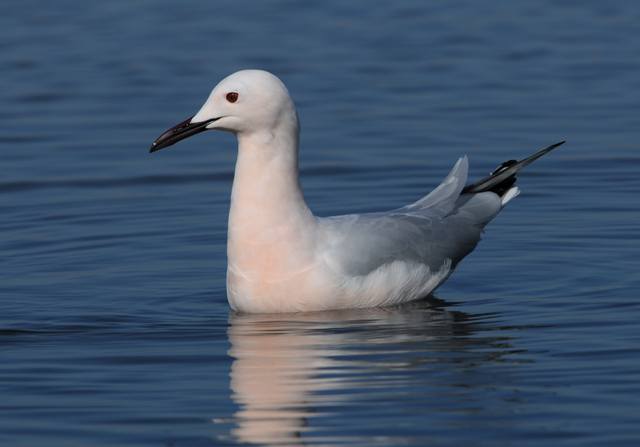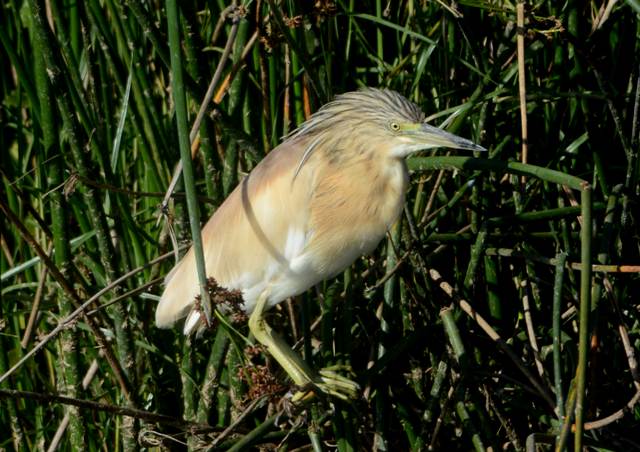Out with Papa-figos

Clive Viney - co-author of Algarve Wildlife - the natural year
Papa-figos (which literally translates as fig eater) is the Portuguese name for the Golden Oriole, one of the iconic visiting birds of the Algarve. Clive Viney is the co-author of Algarve Wildlife - the natural year, and now, under the guise of Papa-Figos, chronicles his finds, thoughts and feelings while walking in the Algarve countryside throughout the natural year. Look out for his regular updates, illustrated by his fellow co-author and photographer, Ray Tipper, who has kindly provided some of the photographs that illustrate these articles by clicking through from the links below.
Global Big Day - Saturday 8th May 2021
Papa-figos, John Edge and Ray Tipper (aggregate age 229) and an equally ancient Land Rover Discovery took part in this year’s Global Big Day. We were contributing to John & Judy Day’s transatlantic Day Trippers team (International Crane Foundation Bird-a-thon) and BirdLife International World Bird Club team.
The weather was splendid for birding – fine and mostly sunny all day, 13-25°C with a gentle breeze. High tide in Tavira at 13h32 was convenient.
Our target was to break 100 but we really wanted to get close to the incredible 117 that was achieved when I was a comparatively inactive part of Gonçalo Elias’s team in the Global Big Day on 4th May 2019 (see Out with Papa-figos June 2019 – Global Big Day). We were now four days later in May and did not have Gonçalo’s amazing aural ability and knew that would make it difficult.
05h00 – 05h35 Fojo (Tavira) – pre-sunrise. An abandoned quarry, Assêca Valley and adjoining hillsides.
We met under a starlit sky dominated by Ursa Major and on the horizon was a lovely waning crescent moon. This proved to be an excellent start close to home, with Red-necked Nightjars easily heard in three localities. A Barn Owl screeched and another flew in front of the Discovery. Before the first hint of dawn Nightingales, Blackbirds and a Woodlark were heard and Ray identified a Subalpine Warbler singing from hillside scrub.
06h00 – 06h50 - Parque da Fonte Férrea (Alportel) – dawn chorus. Mixed woodland and the Alportel river valley. Sunrise was 06h28.
We arrived a half an hour before sunrise and were greeted by an unexpected hoot from a Tawny Owl. The weather was perfect but the dawn chorus was less voluble than when John and I visited eleven days before. In the coastal Algarve the dawn chorus has passed its peak by early May. With patience we recorded most expected species including Golden Oriole, Crested Tit, Iberian Green Woodpecker, Nuthatch and Short-toed Treecreeper but missed Blackcap and Great Spotted Woodpecker (this common and widespread species eluded us all day). Interestingly, in the Algarve Chaffinch, Robin, Blue Tit and Wren are only local breeding species, so we were pleased to list them. Bee-eaters passed overhead all day and wherever they could safely create tunnels in sand they bred. These delightful birds winter in tropical Africa. Only apiarists dislike them.

Bee-eater by Ray Tipper Licence enquiry...
06h55 – 07h10 Juncais - Oak woodland and grassland.
Just a short drive through a narrow, stone-lined tunnel under the old Lisbon road (Estrada N2 – Portugal’s Route 66) we reached Juncais. A wonderful, little known area of unspoiled habitat – there is nowhere else like it in the Algarve. We quickly heard the missing Blackcap but sadly not a Turtle Dove – a once abundant migratory species that due to intensive farming and excessive hunting is facing extinction across Europe.
07h55 – 08h35 - Quinta do Vale Golf Resort (north of Castro Marim). A verdant golf course overlooking damp grassland.
We regretted the 45 minutes at the peak time of day that it took to drive from west to east across a third of the width of Portugal but it was necessary. None of us are golfers but golf and its associated development is a tourist mainstay in the Algarve. Some years ago the bubble burst and the resort element of Quinta do Vale, like so many others, failed. Nevertheless, the golf course survived. Everywhere, beautiful orange-flowering Silky Oaks brightened the weedy pavements and abandoned housing and an Iberian Hare greeted us. Formerly, this was a wetland and accordingly, large reed-lined water hazards and a natural stream were incorporated into the course design and the birds came back. Today the birds did not let us down and included Ray’s bird of the day, a returning White-rumped Swift – one of Europe’s rarest breeding birds.
In well under an hour we listed 27 additional species and these included Thekla Lark, Booted Eagle, Glossy Ibis, Southern Grey Shrike and Spanish Sparrow, which were all birds not recorded elsewhere. Some birds like raptors perch on high pylons but today it was a real surprise, a Purple Heron.

White-rumped Swift by Ray Tipper Licence enquiry...
09h05 – 09h35 - Vale do Beliche. A cultivated river valley and a deep-sided reservoir
We had time in hand, so decided to drive up the nearby Beliche Valley to a large reservoir dam. A Quail quipped and we had a good look at a handsome male Western Black-eared Wheatear that Ray had previously photographed (see Out with Papa-figos April 2021 – Wildlife in the Lower Guadiana valley).
Now we headed south, where we expected plenty of new birds. It was just after half past nine and already our total was 64.
09h40 – 11h30 - Reserva Natural do Sapal de Castro Marim e Vila Real de Santo António (simply referred to as Castro Marim Reserve).
This is a large protected wetland reserve (2089ha) lying opposite Spain on the west side of the Rio Guadiana. Habitat variety is good and includes productive and abandoned saltpans (salinas), saltmarsh (sapal), tidal creeks, seasonally flooded pastureland and the tidal shore of the Rio Guadiana. Enclosing and bisecting the wetlands are grassy hills, dry scrubland, farmland and orchards.
We concentrated on three areas, a flooded area and two saltmarshes, where we knew that we could find breeding larks and the rare Spectacled Warbler. The larks behaved well and during the day we recorded no fewer than six species including the very local Lesser Short-toed lark. By early May the wader passage through the Algarve is well past its best but we recorded most expected species.
In the woods we had heard a singing Iberian Chiffchaff but the real surprise here was a singing Common Chiffchaff, a returning migrant that was late heading north.
11h35 – 12h35 - Foz de Guadiana (Villa Real de Santo António) Mouth of the Rio Guadiana and the Atlantic Ocean
John was very tired. He’d had his first Covid-19 vaccination the day before but was determined to soldier on. Fortunately, as the long day progressed he improved. We all looked forward to a coffee break at a pasteleria (cake shop) on the riverfront in Vila Real and asked for pastéis de nata (classical Portuguese egg custard tarts). The proprietor was very sorry and she told us that Spaniards had come across on the ferry and bought them all. The border with Spain had recently reopened and the cross-border traffic was three times greater than normal. The coffee was still good.
A long line of Spanish fishermen along the breakwater was more evidence that the border was open. The tide was high and just one sandbar remained but that held a large number of Audouin’s Gulls and a flock of Red Knot resting on their way north to their Arctic breeding grounds. Audouin’s Gulls are near threatened and more or less confined to the Mediterranean region. Despite their worrying status they are a Portuguese success story with over three thousand pairs breeding on Ilha Deserta in the Ria Formosa last year. A few Gannets passed well offshore.
In order to avoid a line of cars I parked up against a low concrete barrier. Driving off I forget it was there and a loud crash followed. Gingerly, I got out and expected to find smashed lights and worse but just a bent mudguard that made a spectacular noise every time I turned right. “Tough old birds, these Discoveries”, to quote John.
12h50 – 13h30 - Cerro do Bufo (core area of Castro Marim Reserve) – I drove around the narrow and heavily rutted perimeter public track.
Water levels in the impoundments were high everywhere. We had expected better but the Collared Pratincoles were special. We ate our sandwiches appropriately enough watching passing Sandwich Terns and a solitary Caspian Tern. As we drove away our score was 99.

Collared Pratincole by Ray Tipper Licence enquiry...
13h50 – 15h00 - Salinas de Tavira, which is part of the Parque Natural da Ria Formosa (simply referred to as Ria Formosa).
This is a vast coastal area of barrier islands, dunes, saltmarshes, saltpans, beaches, creeks, tidal shoals, lagoons, freshwater lakes, woodland and farmland – it is 60km long and has an area of 14373ha. Unfortunately there is little protection and much of the area has suffered from unsympathetic development.
This is my home patch and I knew where to look. Our century bird was a Turnstone, a shorebird that can be found almost anywhere in the world. Beautiful adult Slender-billed Gulls were a real treat and I feel that before long they will settle in the Algarve.
A second coffee break was taken at Club Náutico in the sunshine at Quatro Águas. Moving on was difficult.

Slender-billed Gull by Ray Tipper Licence enquiry...
15h50 – 16h10 - Salinas de Olhão, which is part of the Ria Formosa. An easy drive round old saltpans but no new species were found.
16h25 - 16h50 - Quinta do Ludo (Faro), which is also part of the Ria Formosa that includes a large brackish water body (Esteiro da Maria Nova) but again no additional species were found. We knew that once we cracked a hundred new species would be difficult to find.

Ruddy Turnstone, our century bird by Ray Tipper
16h50 – 19h00 - Quinta do Lago (Faro) – the extreme western part of the Ria Formosa that has been developed as an upmarket golf course resort but nevertheless includes open woodland, a large manmade freshwater lake, Lagoa de São Lourenço, and overlooks a tidal estuary (Esteiro do Ancão).
We were delighted to see the Mistle Thrush, an uncommon species, that I had seen gracing the first fairway four days before. As ever, exotic Hoopoes were searching for grubs – Portuguese golfers call them the green keepers. The lakeside provided displaying Black-headed Weavers, yellow gems. On the lake our list of ducks was completed with handsome Red-crested Pochards and, unusually, we had good views of three Little Bitterns. John and I had no doubt about our bird of the day, a superb Squacco Heron standing proudly at the edge of the lake. So rare locally that I had to provide eBird with additional notes.

Hoopoe by Ray Tipper Licence enquiry...
19h00 – 20h00 - Praia da Ilha de Faro – a beach development, which is still part of the Ria Formosa. Sunset
We scanned the Atlantic but there really was not much more that could be realistically found. A grand total of 112 was a magnificent score and well beyond our expectations. We had some good fortune but where were the Little Owls and Woodchat Shrikes? Unfortunately, they are two breeding species that I feel are in decline locally, which makes exercises like this, so useful.
We finished the day with canecas (tankards of beer), delicious steamed prawns and grilled sardines at an open-air beachside restaurant. A day to savour.

Squacco Heron by Ray Tipper Licence enquiry...
Papa Figos
May 2021
Back to Papa Figos...